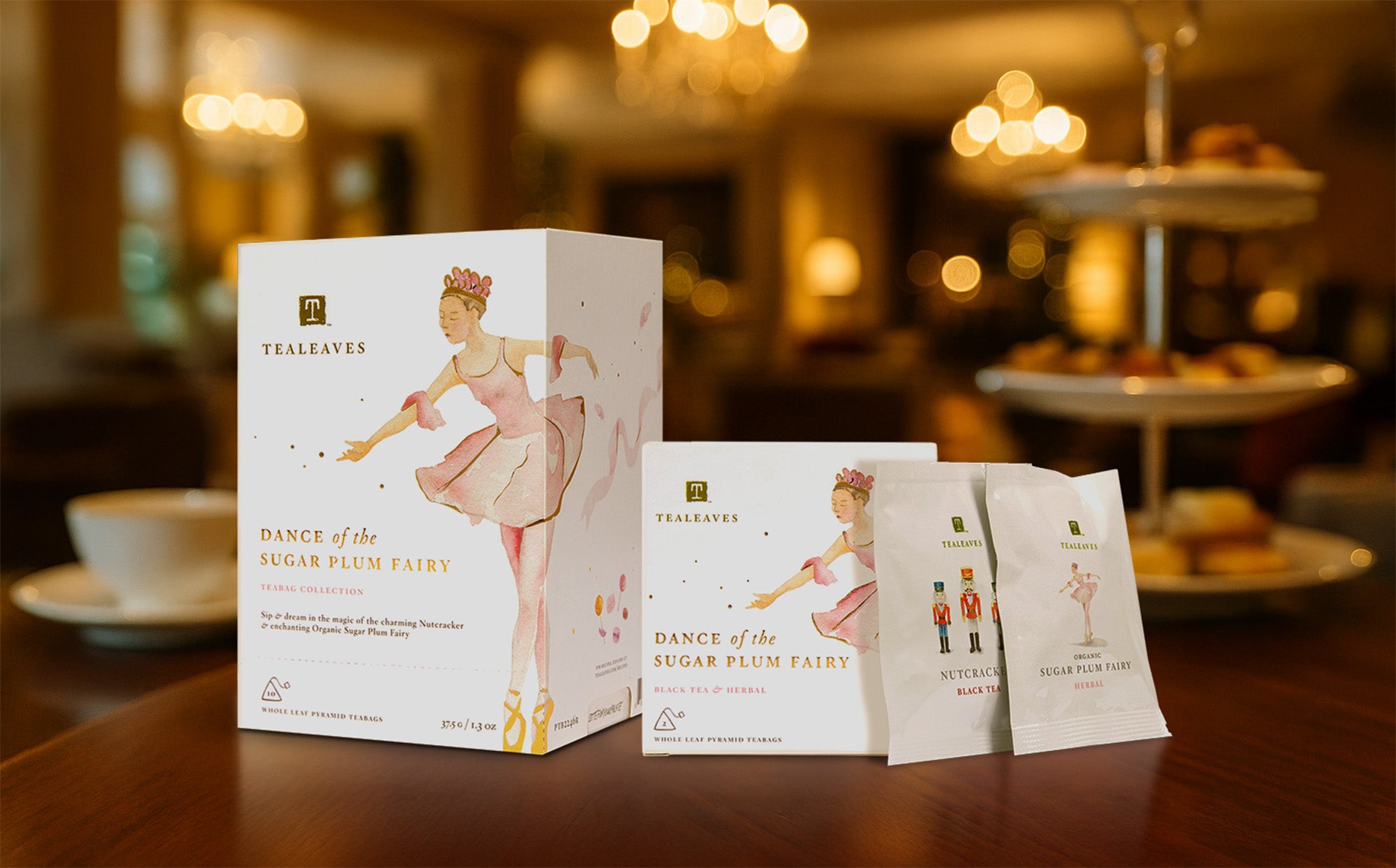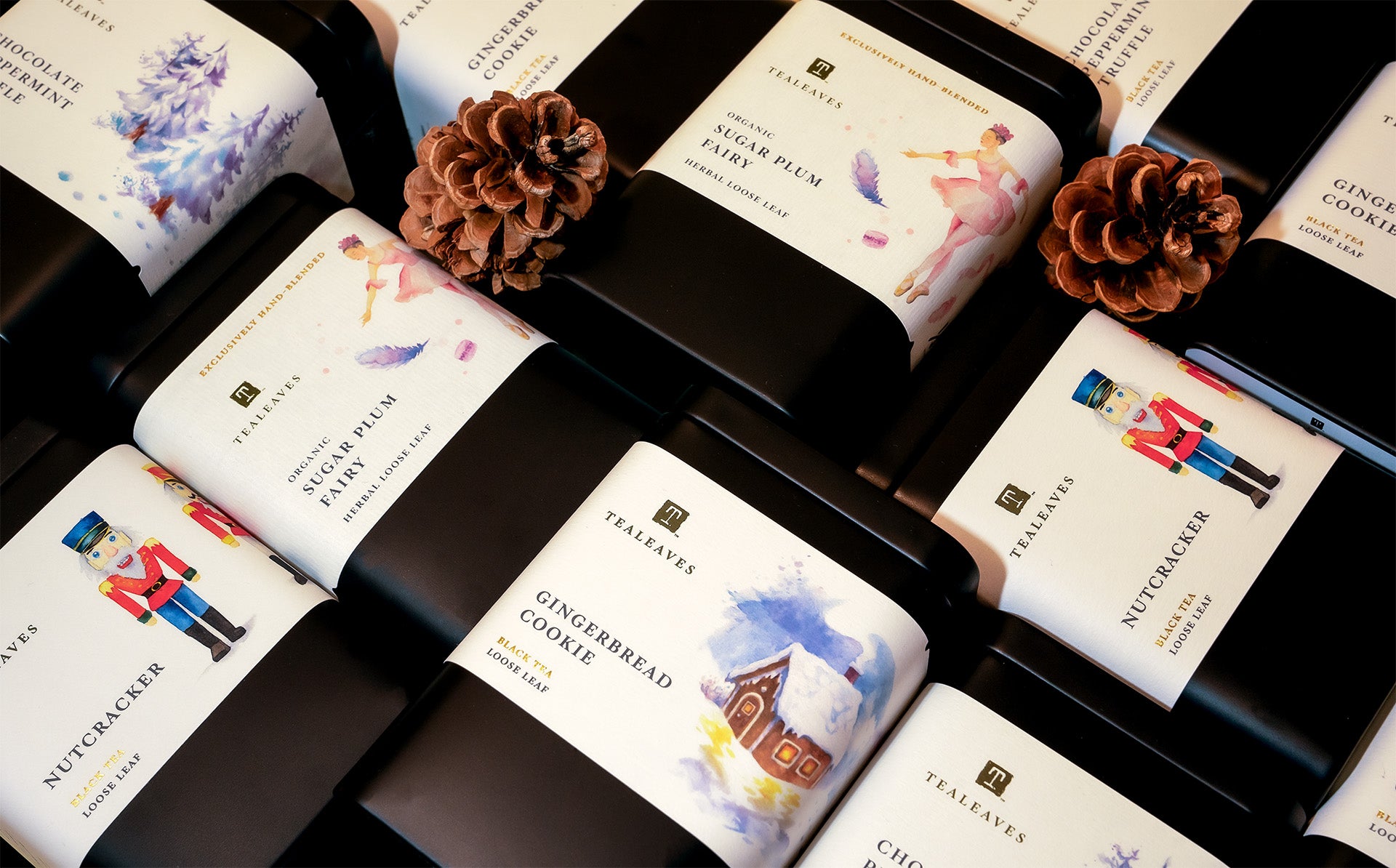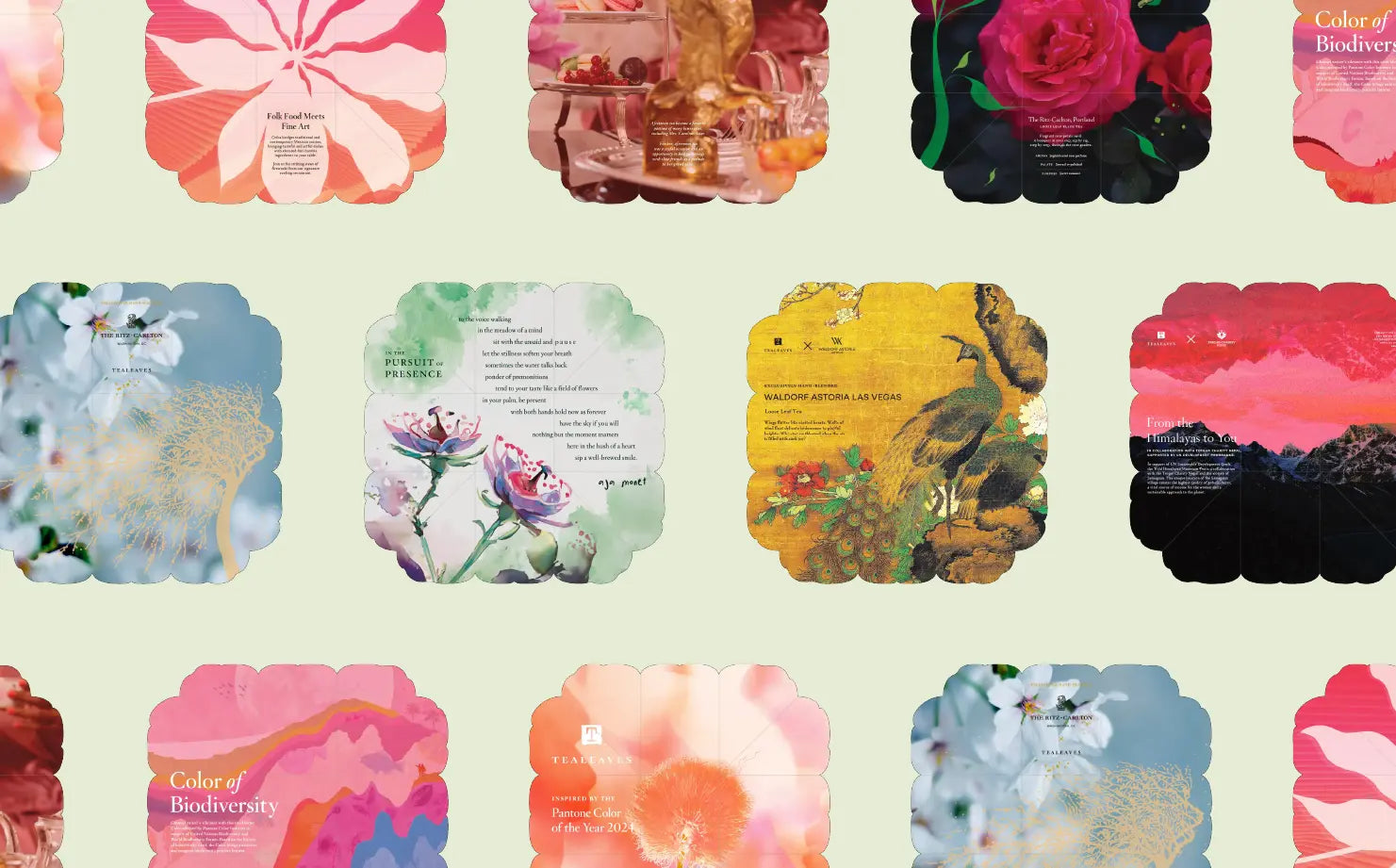What is Tea?
We relentlessly pursue only those leaves of extraordinary taste. Using a variety of key metrics, we ensure that we create only the finest cup.
All tea, whether it be green, black, white or oolong, comes from the same plant, the evergreen shrub Camellia Sinensis. As blenders, the method of harvesting and treatment contribute to each tea’s distinctive signature. At TEALEAVES, only the best teas are picked entirely by hand, and only the bud and top one or two leaves are plucked. Once picked, our leaves are dealt with differently depending on the type of tea desired. Oxidization (also know as the Fermentation Process) is the underlying process that gives green, black, and oolong teas their individual characteristics.
As with wine, a tea’s character is determined greatly by subtle differences in soil, climate, and elevation. Cool nights, dry weather, and bright sunny days combined, provide the optimal conditions for growing tea. This type of climate forces the tea bush to expend all its energy in the growth of new shoots. Our finest teas come from gardens of high elevation, where cooler temperatures slow leaf growth producing leaves with a more concentrated flavor and aroma.
Oxidation (also known as fermentation) is the natural process that alters the chemical structure of the leaf, allowing key flavor characteristics to emerge. Our rolling process releases the enzymes naturally occurring in the tea leaves. These enzymes, which have been released by the rolling, react with the air.Temperature, humidity, and time are the factors that must be controlled during this process. As blenders, varying the length of time is one way to change the character of the tea. The longer the leaf oxidizes the softer its taste, the deeper its color and the higher its caffeine.
Learn More About Our Tea Varietals
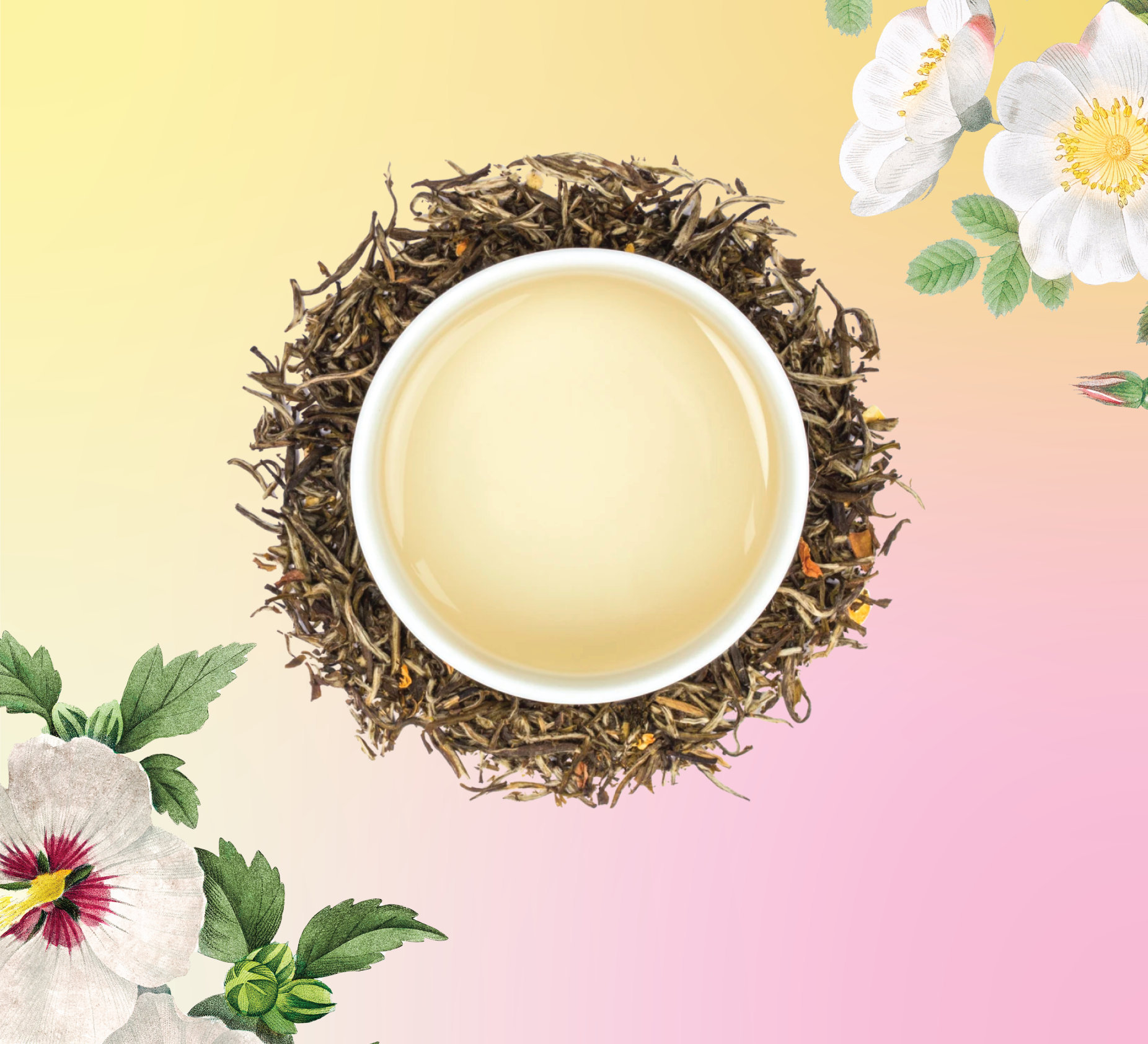
White Tea
Named for the silver downy hairs that cover the young unopened bud, white teas are highly prized and consist of only the top buds and leaves. Originally harvested from wild tea bushes in China’s Northern Fujian province, it was discovered by ancient tea connoisseurs who were always on the lookout for the ultimate tea: an immature bud with delicate flavor. We simply steam or de-enzyme white tea after picking, producing less tannins when steeped. As white tea is closest to its natural state, it has the most antioxidants of the tea varieties.
Learn More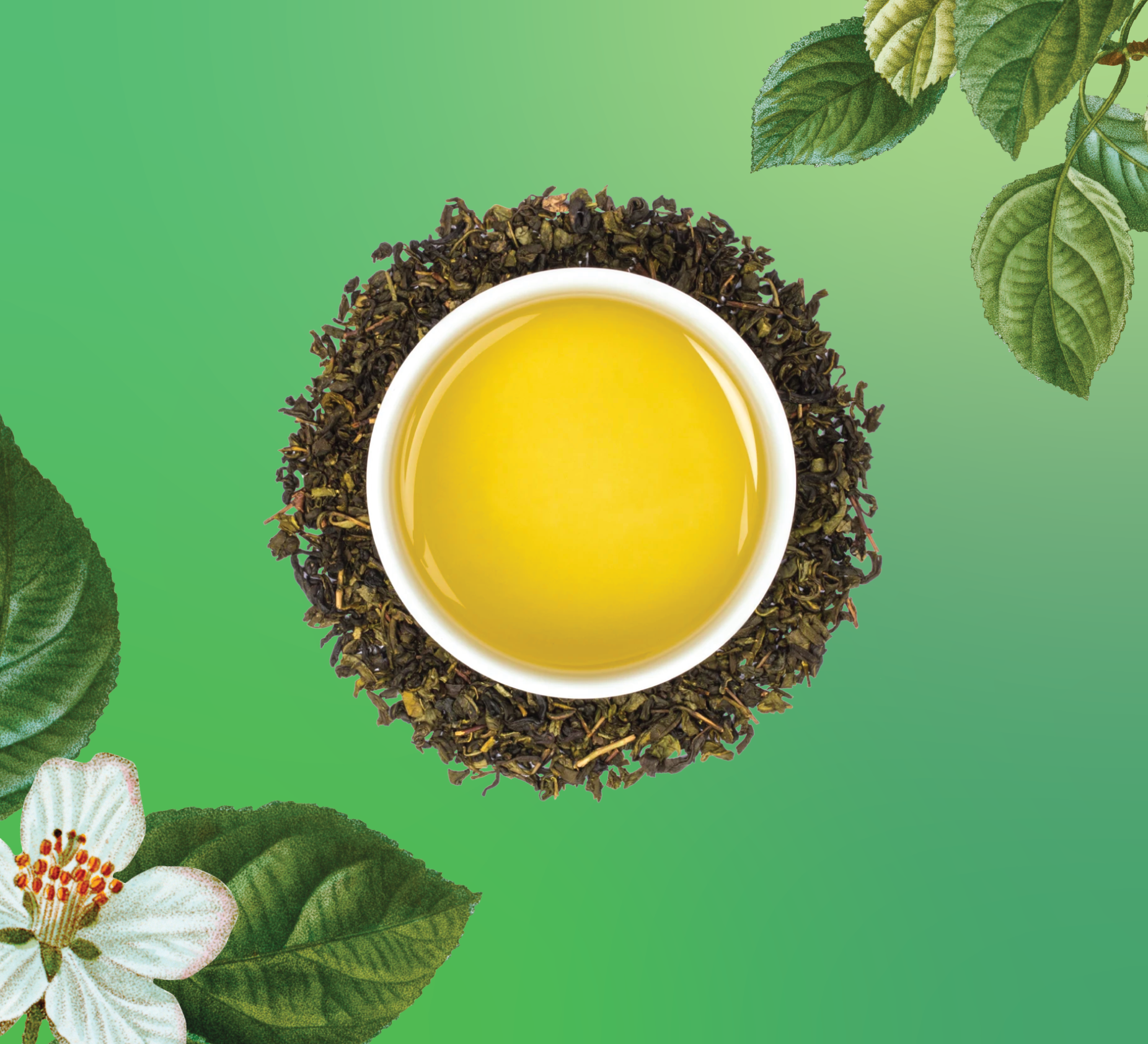
Green Tea
Typically cultivated in China, Taiwan, and Japan, green tea is an un-oxidized tea that has a more subtle, delicate flavor than its oxidized counterparts, with lower caffeine levels. It is also believed to have enhanced medicinal benefits in comparison to oxidized teas because the leaves retain a higher concentration of natural vitamins and polyphenols. Known as a health-boosting beverage, green tea contains an abundance of minerals (iron, sodium, potassium) and vitamins (carotene, A, D, B1, B2, C).
Learn More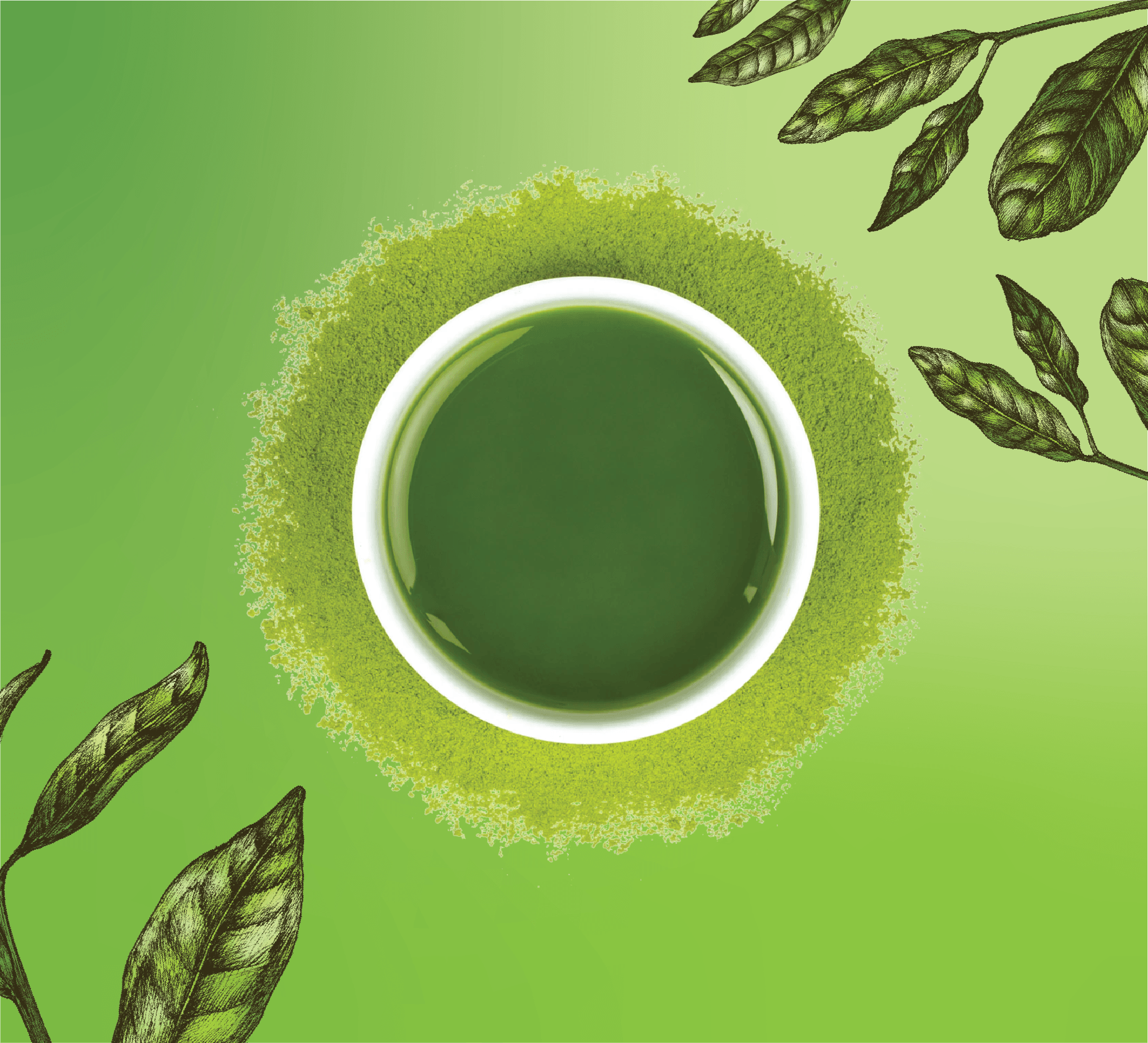
Matcha
Matcha was discovered over 900 years ago, known worldwide as a go-to wellness solution, and is a powdered green tea used in Japan’s formal tea ceremony, as well as for everyday drinking pleasure, and as a flavorful addition to countless recipes. Prized for its high concentration of nutrients as well as its distinctive flavor, numerous medical studies point to Matcha’s beneficial properties: high in nutrients such as polyphenols, L-theanine, minerals, vitamins, fibres, potassium, and chlorophyll. Matcha provides a steady long-lasting boost of energy, expanded awareness, and maximum antioxidants without the unwanted side effects typical to coffee or a sugar high.
Learn More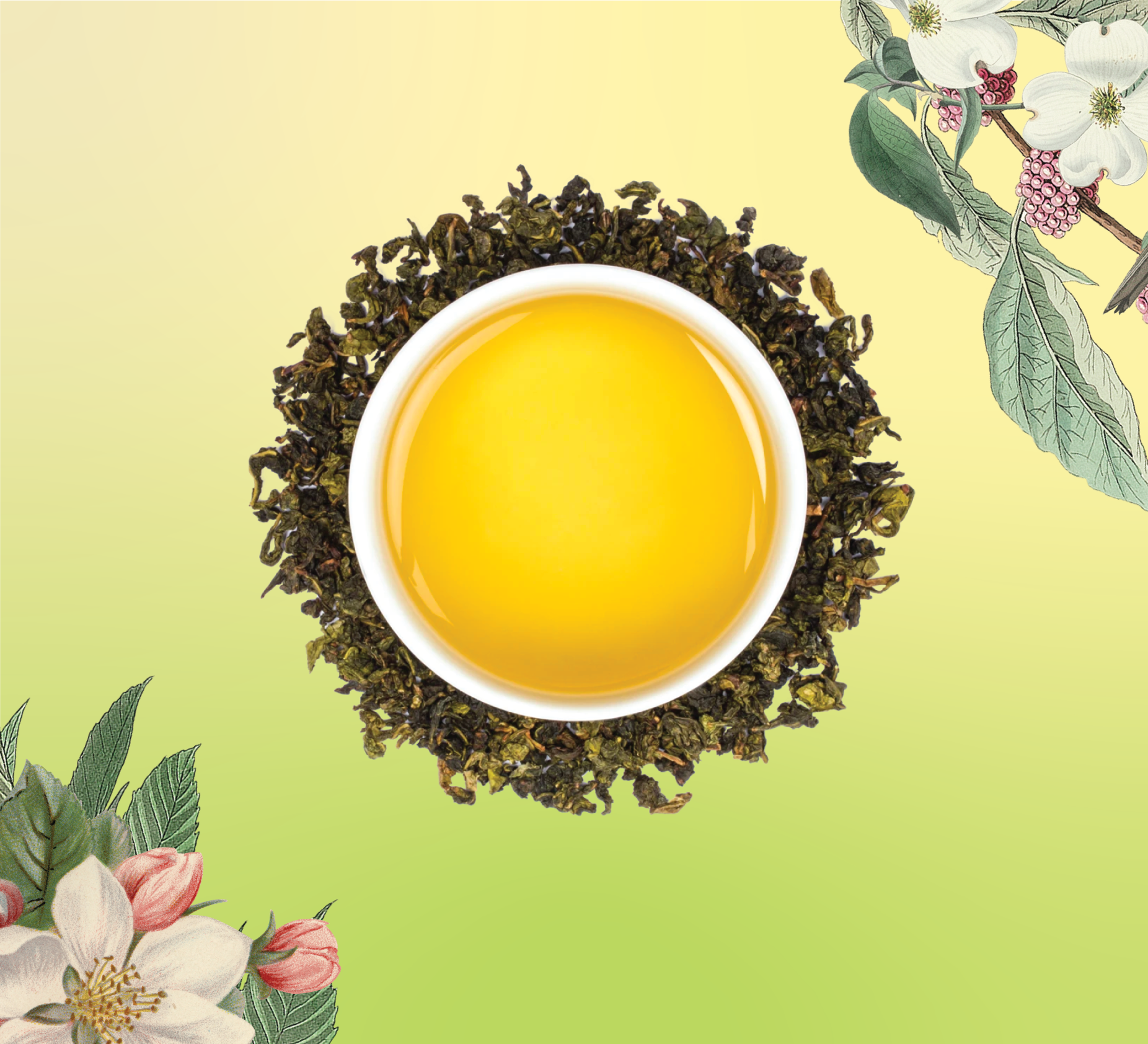
Oolong
There are two main types of oolong: the Chinese one and the Taiwanese variant (Formosa). Oolong from China is oxidized only 12–20%, resulting in a pale yellow liquor with a distinct fresh taste. Formosa oolong is 60% oxidized and known for its golden liquor and exquisite floral aroma. As a semi-oxidized tea, in our blending process it undergoes the same treatment as black tea but for less time and where only the edges of the leaves are rubbed. During our infusion, oolong leaves turn bright green in the center and red towards the edges. Especially known for its digestive properties, Oolong is a great choice after any meal.
Learn More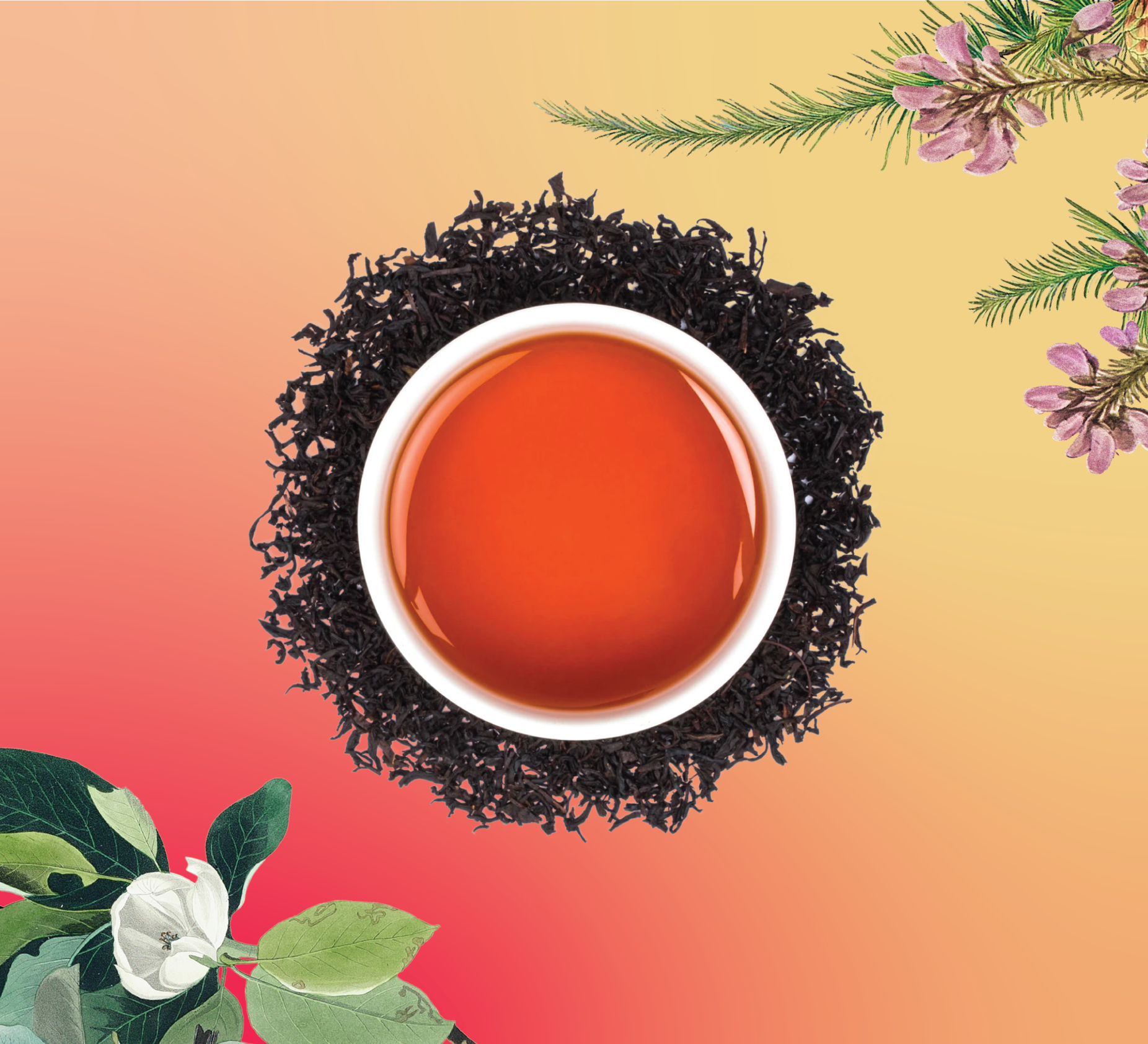
Black Tea
Black tea is grown in China, India, Sri Lanka, and Africa, and is the most common type of tea consumed in the West. The leaves range in color from brown to black, often with golden or silver tips. The bright copper liquor has a full-bodied aroma, and a flavor ranging from malty to flowery. Its color and character come from the processing of the leaves. Once we pick the leaves, they are oxidized, resulting in higher levels of soluble caffeine and tannins. Black tea is a healthy companion, containing antioxidant polyphenols, vitamins and essential oils which aid in digestion.
Learn More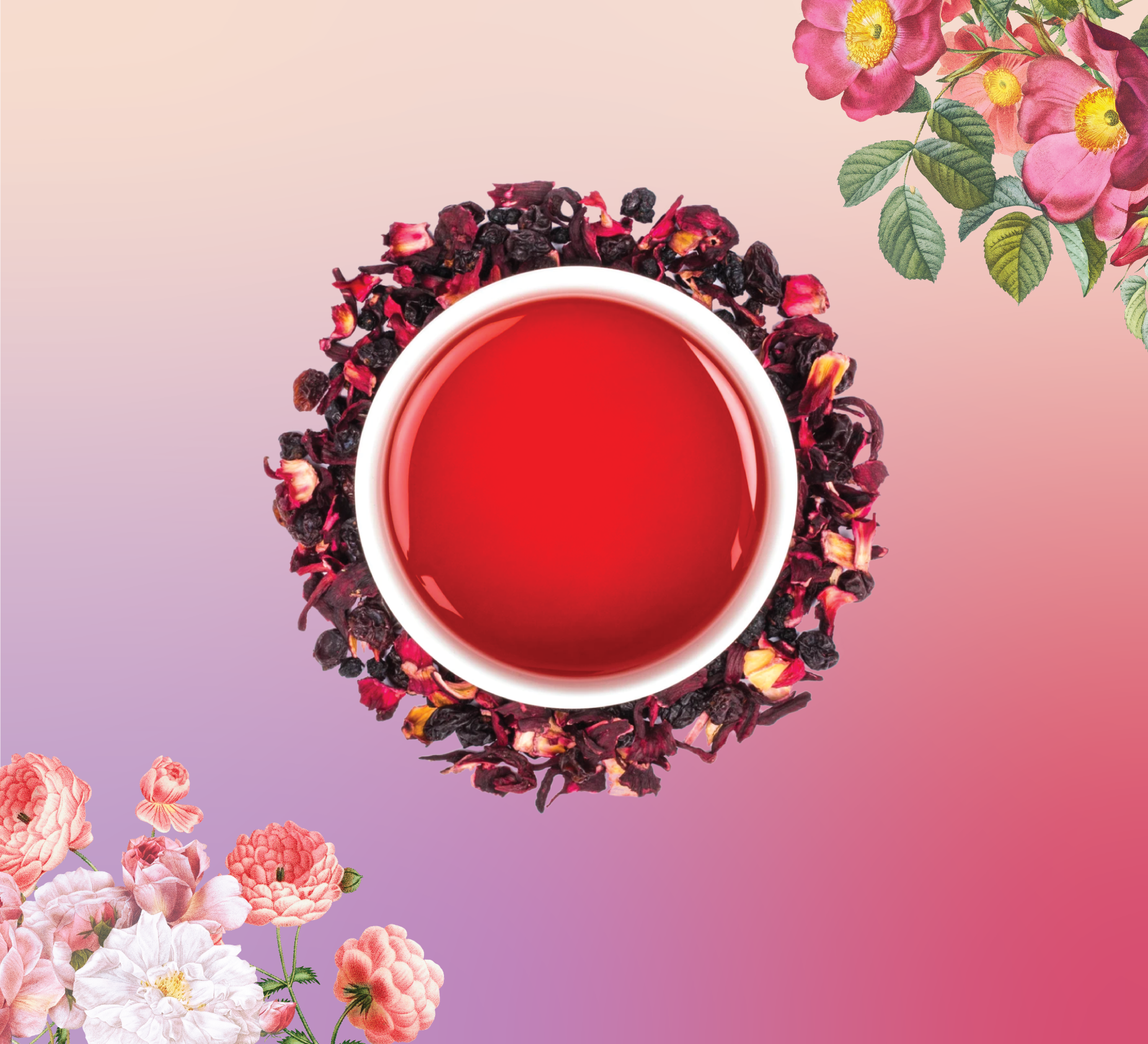
Herbal Infusions
Tea is a term that can only be applied to the leaves and the infusion of the Camellia Sinensis plant. Instead, we call the caffeine-free blends of herbs, flowers or spices “Herbal Infusions”, and those of fruits and berries “Whole Fruit Tisanes”. By combining pure herbs, flowers, and spices, our Master Blenders have created a collection of herbal infusions to be enjoyed for their pure taste or restorative properties. We are proud to source the highest quality herbal ingredients from the world's best gardens, ingredients which retain their essential oils to ensure the best flavor.
Learn More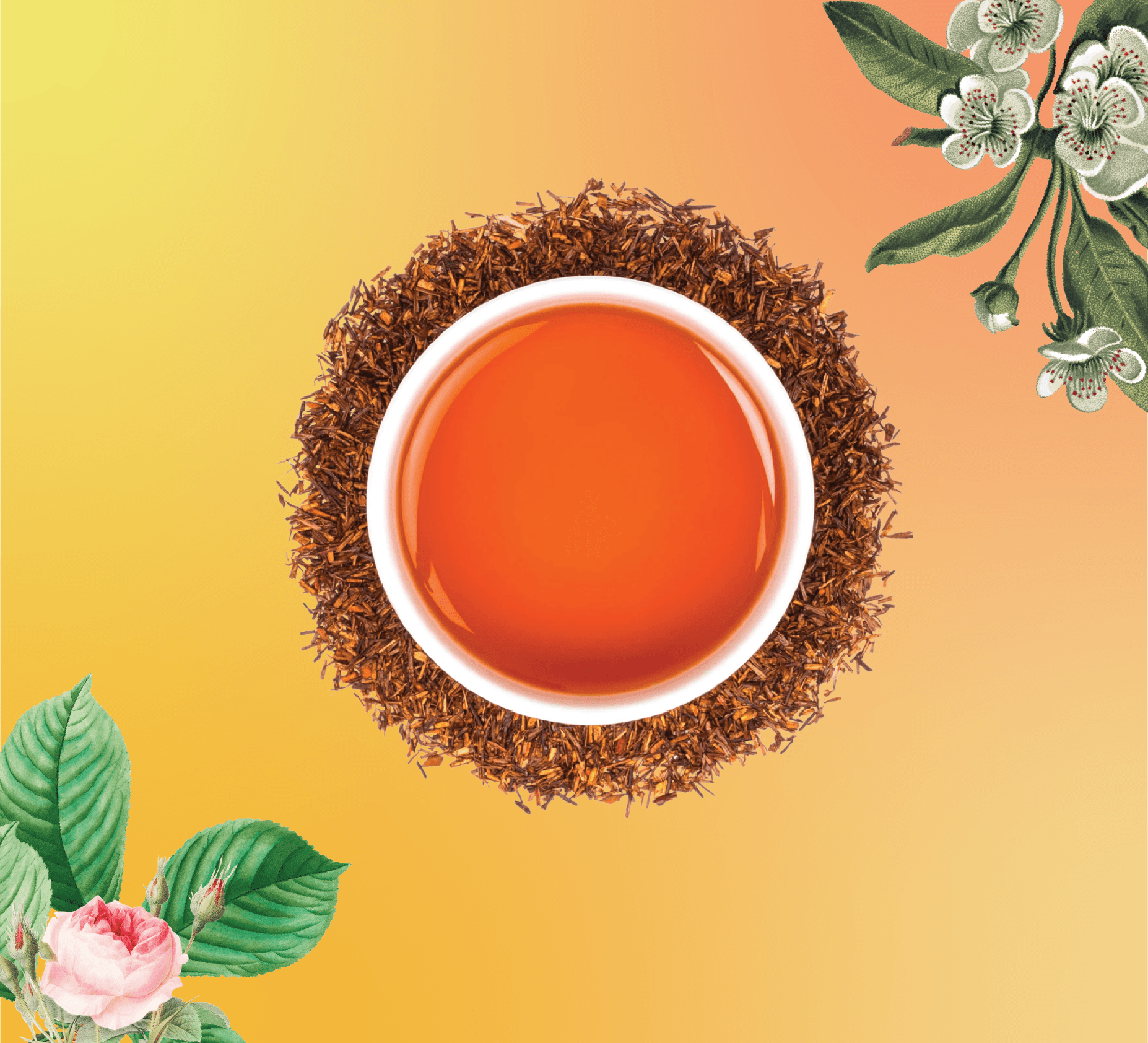
Rooibos
Known as one of the world's healthiest herbals, Rooibos tea was traditionally consumed by the region's Khoi peoples of South Africa. In 1772, botanist Carl Humberg discovered that the locals of the Cape's Cederberg region made a sweet tasting "tea" of the indigenous "red bush" plant. They picked the stems and leaves, bruised them with hammers, left them in piles to ferment, and then dried them in the sun. The infusion tastes like black tea yet has no caffeine, is low in tannins, and is packed with vitamins, minerals, and antioxidants. Rooibos is said to relieve stomach ulcers, nausea, constipation, heartburn, cramps, colic, and insomnia.
Learn More


